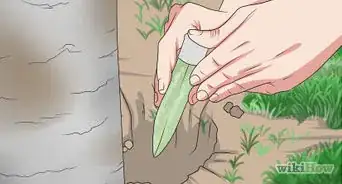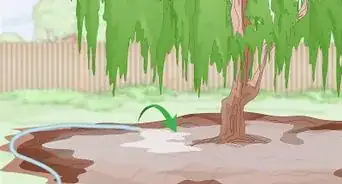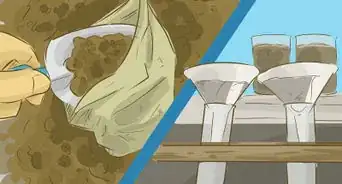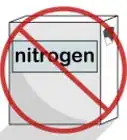This article was co-authored by Rachel Guffey and by wikiHow staff writer, Eric McClure. Rachel Guffey is a Plant Specialist and the Owner of Jungle House, a house plant shop based in Lawrence, Kansas. She specializes in plant education and caring for indoor plants. Rachel is passionate about using plants to help combat seasonal depression. She aims to make plants feel more accessible and approachable to everyone. Rachel has owned over 500 plants at one time.
There are 10 references cited in this article, which can be found at the bottom of the page.
This article has been viewed 41,861 times.
The fertilization of herbs is a hotly-debated topic in the gardening community. The general consensus is that the vast majority of herbs should not be fertilized—especially if you plan on using them as ingredient in food. Herbs are quite resilient to begin with and if they grow too big, their aroma and flavor will diminish significantly. If you do want to fertilize herbs, use a water-soluble organic mix when you first plant them in your pot or garden. If your herb tends to wilt only a few weeks after peaking, sprinkle a small amount of 5-10-5 fertilizer mix every 3-6 months to encourage consistent growth.
Steps
Knowing When to Fertilize
-
1Fertilize herbs at the beginning of their growth cycle for best results. Most herbs will start to grow in the early spring. This is the best time of the year to fertilize your herbs. This way, the herbs will benefit from the nutrients at the time of the year when they need nutrients the most.[1]
- Herbs that keep drying out after peaking may regular fertilization. Use a 3-, 4-, or 6-month cycle to regularly fertilize these plants. Start the cycle in the early spring so that you loop back to fertilize your herbs at the peak of the growth cycle every year.
-
2Do not fertilize garden herbs unless it’s absolutely necessary. Outdoor herbs like sage, lavender, and chamomile tend to stay healthy without fertilization so long as you water them regularly and give them plenty of sunlight. If you notice that your herbs tend to wither or shrink 1-2 weeks after they peak in their growing cycle, they may require fertilizer. If your herbs tend to stay strong and wilt at the same rate as the other plants in your garden though, avoid the fertilizer.[2]
- Fertilizer is largely unnecessary for garden herbs in the vast majority of cases.
- Herbs typically need 6-10 hours of sunlight a day to remain healthy and strong.
- Herbs are extremely resilient and usually only die quickly if your soil isn’t draining properly or they aren’t receiving enough sunlight.
Advertisement -
3Avoid fertilizing culinary plants to keep the flavors intact. Do not fertilize any herbs that you plan on using as an ingredient in a meal. Fertilizer can make herbs grow bigger, but it will also absorb most of the flavors in the herbs and turn them flavorless and bitter. If you have an herb like mint, thyme, chives, oregano, or basil, avoid fertilizing at all costs.[3]
- If you’re only growing herbs for their pleasant aromas, the fertilizer will dampen their scents quite dramatically.
Warning: Mint is a particularly bad plant to fertilize. It's invasive and will quickly overpower other plants or outgrow your pot if you feed it fertilizer.
Fertilizing Your Herbs as You Plant Them
-
1Use an organic, water-soluble fertilizer to encourage growth. Get an organic plant fertilizer that is water-soluble. While any fertilizer will work, mixes with fish oil or seaweed tend to work best for herbs. Avoid liquid fertilizers if you can. They tend to keep nutrients around longer than necessary, which can cause excess growth once your herbs are planted.[4]
Tip: It’s not a good idea to fertilize herbs the first time that you plant them because the odds are high that they won’t need any help in their new environment. However, if you’re transferring herbs from one pot to another and your herb has an established record of struggling with re-planting, fertilizer can help the roots grow quickly and work their way into the soil.
-
2Mix 1-2 tablespoons (about 1-4 g) of fertilizer into your potting soil. Before planting your herb, use a spoon to scoop up your fertilizer. Shake it over the surface of the soil where you’re planning on planting your herbs. Once you’ve added your fertilizer, use your hands to work the fertilizer deeper into the soil. Move the soil around for 10-20 seconds to spread the fertilizer out.[7]
- The weights for fertilizer vary from product to product. In general, 1-2 small scoops is a healthy amount for the average herb.
- You can wear gardening gloves to keep your hands clean if you’d like.
- The amount of fertilizer you need to use is dependent upon the herb and the amount of soil in the pot. The less soil there is and the smaller the herb happens to be, the less fertilizer you need.
-
3Plant your herbs in the center of the soil and compress the sides. Use your hands or a trowel to create an opening in the center of your soil. Spread the soil out to the sides and place your herbs in the soil. Orient your herbs so that the stems are flush with the surface of the soil. Scoop the soil back towards the center of the pot or planter and use a trowel or your hand to push the soil down around the sides of the plant.[8]
- Compressing the area around the plant will ensure that the herb’s roots are fully surrounded with soil and remain stable as they settle.
-
4Water your plants immediately after planting them. With your herbs in the soil, fill a watering can with lukewarm water. Give your plants a quick drink by pouring 2–3 cups (470–710 mL) of water over the soil. This will ensure that the water-soluble fertilizer gives your freshly-potted plants a healthy dose of nutrients immediately.[9]
- This will encourage quick growth. If the plants grow too quickly, prune them by clipping off dried out leaves and lengths in the 1-2 weeks after you’ve fertilized your herbs.
Maintaining Your Herbs with Fertilizer
-
1Fertilize herbs as needed once every 3-6 months. If you notice that your herbs tend to dry out and wilt after 1-2 months of planting, they may require a regular dose of fertilizer to keep them healthy and pungent over the course of the year. Fertilize the plants every 3-6 months to maintain your herbs as needed.[10]
Tip: If possible, use a 3-, 4-, or 6- month cycle. This way you’ll always re-fertilize your plants at the same time every year. This schedule will ensure that you feed the herbs during the early spring when they’re most likely to need the nutrients.
-
2Use a 5-10-5 fertilizing mix to maintain regular growth. Get a 5-10-5 mix of nitrogen, phosphate, and potash from your local gardening store. Nitrogen encourages the herb’s color and strength while phosphate will ensure that your herb’s roots stay healthy. Potash will help the plant stay strong and resilient as it grows.[11]
- You can use a mixture that uses potassium instead of potash if you prefer. They’re essentially the same thing. Potash is simply potassium in rock form. It tends to be a little more popular than potassium because it takes a longer time to break down into the soil.
- Fertilizers with higher nitrogen contents tend to be bad for herbs. It encourages too much growth which can diminish the aroma and flavor of your herbs.
-
3Sprinkle half the recommended amount over the soil. Read the fertilizer’s packaging to see what the recommended amount is for plants. Cut that amount in half to determine how much fertilizer you need for your herbs. Typically, this will be 1-2 pea-sized pinches of fertilizer. Sprinkle the fertilizer over the soil around your plant to apply it.[12]
- Do not work the fertilizer into the soil. This will give your herb too many nutrients, too quickly.
- Monitor your herb’s growth closely over the course of the next 2-3 weeks. If the herb gets too big or starts wilting, prune it and cut back on the fertilizer even further the next time it comes to feed your herb.
Things You’ll Need
Fertilizing Your Herbs as You Plant Them
- Potting soil
- Trowel
- Gloves (optional)
- Organic plant fertilizer
- Spoon
Maintaining Your Herbs with Fertilizer
- 5-10-5 fertilizer mix
References
- ↑ https://www.ithacagardenclub.org/garden-gallery/gardening-tips/fertilizer-tips/
- ↑ https://www.bhg.com/gardening/vegetable/herbs/best-herbs-for-container-gardens/
- ↑ https://agrilifeextension.tamu.edu/library/landscaping/herbs-texas-landscapes/
- ↑ https://youtu.be/tdwg_oHbXsI?t=368
- ↑ Rachel Guffey. Plant Specialist. Expert Interview. 5 August 2021.
- ↑ Rachel Guffey. Plant Specialist. Expert Interview. 5 August 2021.
- ↑ https://youtu.be/tdwg_oHbXsI?t=481
- ↑ https://youtu.be/tdwg_oHbXsI?t=577
- ↑ https://youtu.be/tdwg_oHbXsI?t=1091
- ↑ https://agrilifeextension.tamu.edu/library/landscaping/herbs-texas-landscapes/
- ↑ https://www.wvgazettemail.com/life/gardening/good-to-grow-a-little-history-gardening-and-folklore-on/article_59cdd6c0-c7b8-5024-9d5c-0b22c5ac8508.html
- ↑ https://extension.umn.edu/vegetables/growing-herbs-home-gardens#soil-testing-and-fertilizer-929710
About This Article
Most herbs don’t need to be fertilized if they receive enough water and sunlight. However, if your herbs are starting to wither or shrink a couple of weeks into their growing cycle, you can use an organic, water-soluble fertilizer to help them grow. If you intend to use your herbs in food, keep in mind that using fertilizer will reduce their fragrance and flavor. Only fertilize your herbs every 3 to 6 months, using a 5-10-5 mix. Use about half as much as the label recommends for fertilizing plants. For more tips, including how to fertilize struggling herbs when transplanting them, read on!
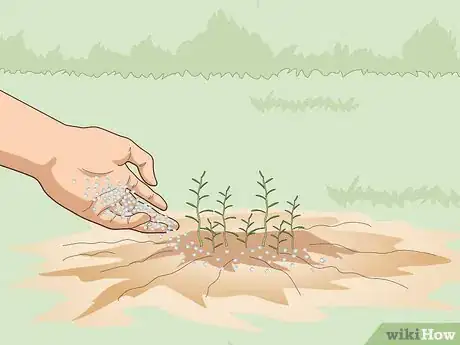
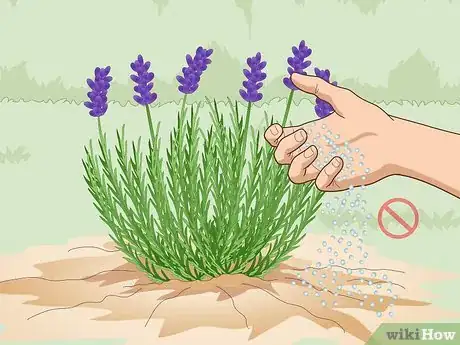
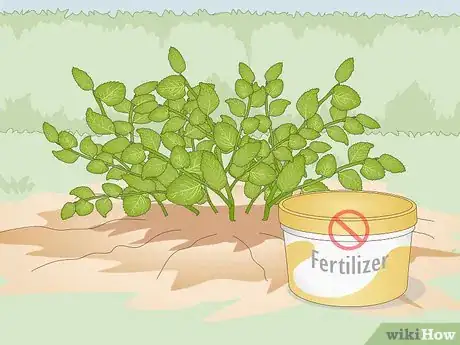

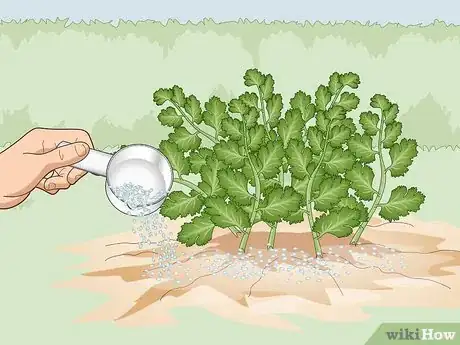
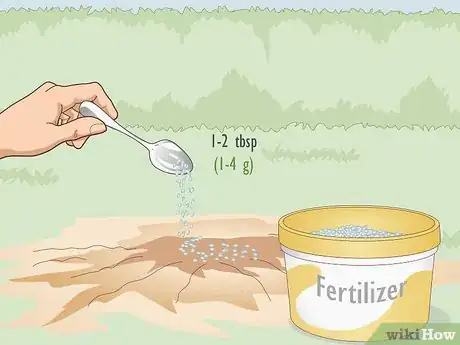


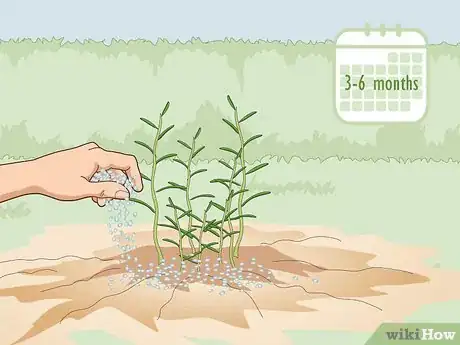

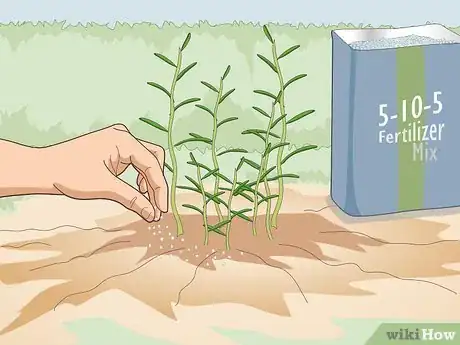
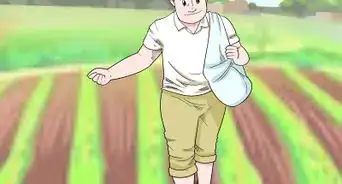
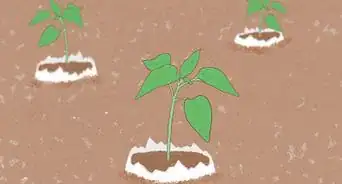
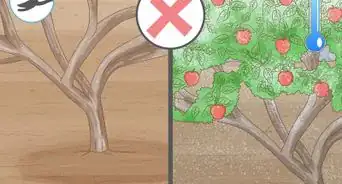

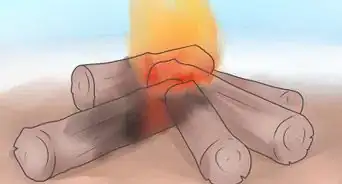
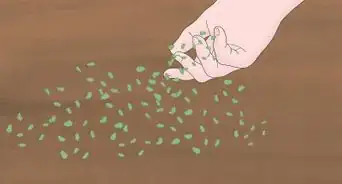
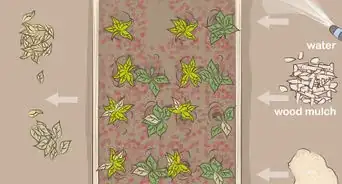
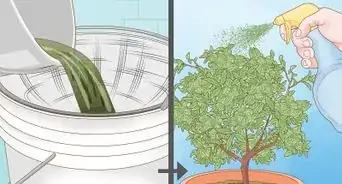
-Step-10-Version-3.webp)
